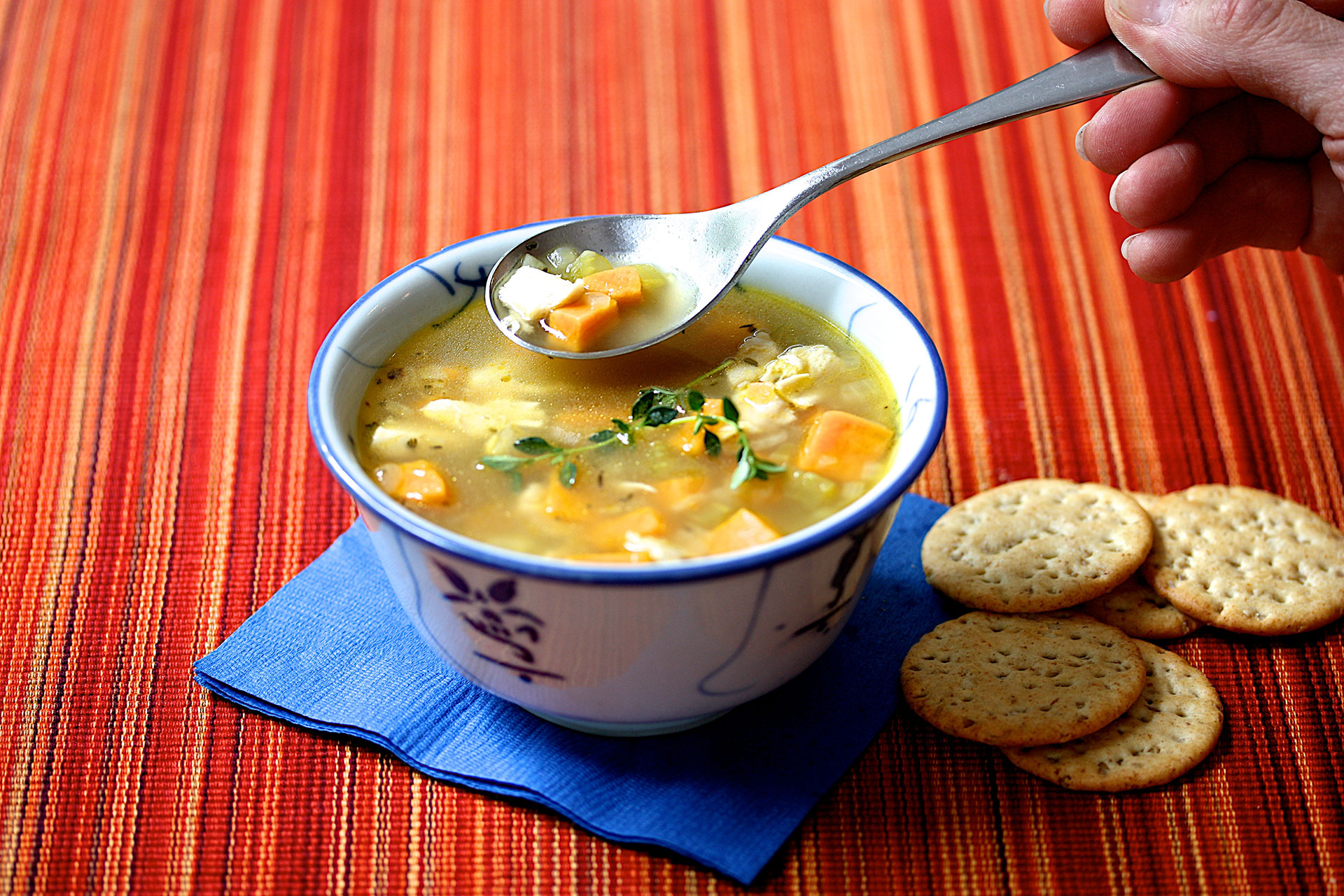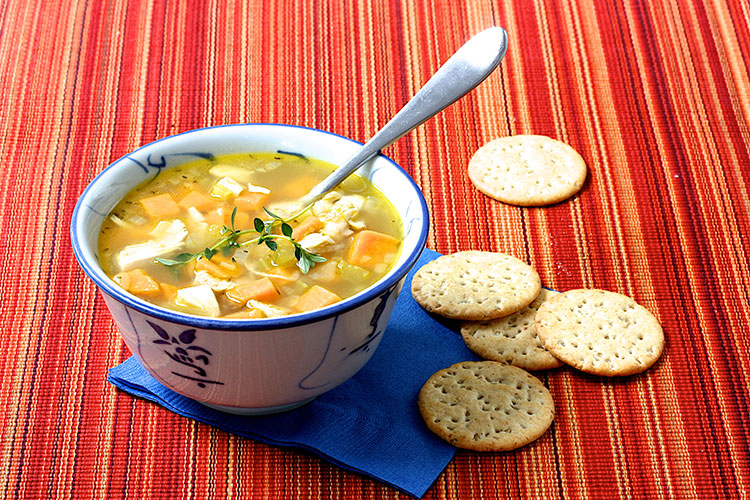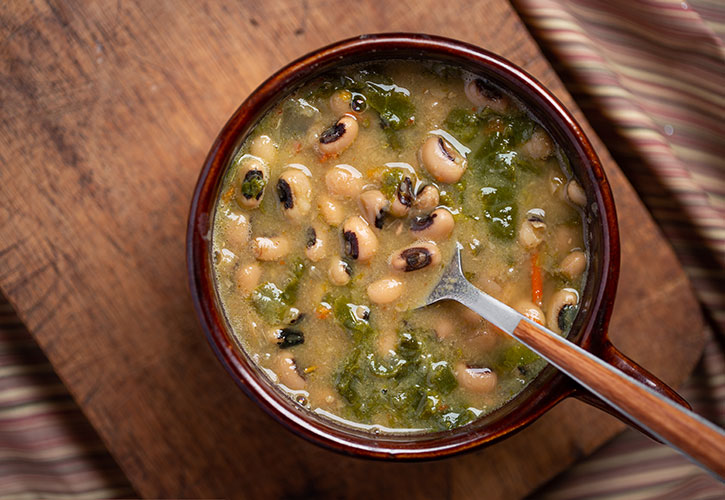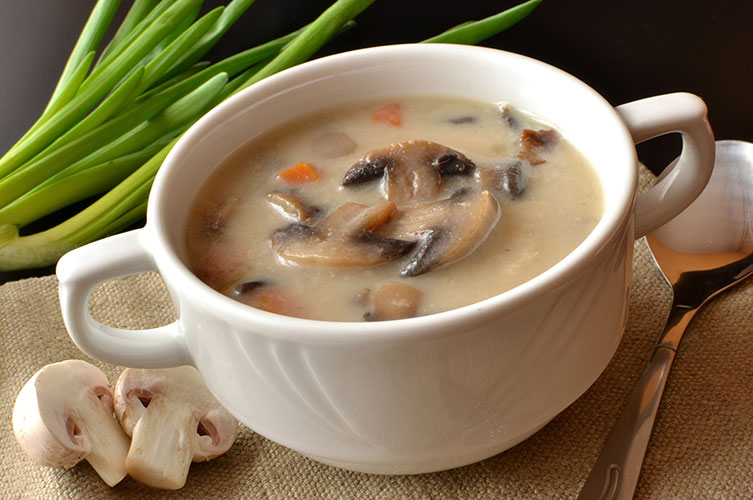When the weather turns cold and windy, warm up with our hearty and healthy winter soups. Homemade soups are easy to prepare, they’re fun for kids to slurp, and they taste great too. Our black bean and sweet potato soups are made with lots of vegetables, so every spoonful brings great nutrition to your family’s diet.

Making Sense of Soups: Sweet Potato & Chicken Soup
- Home
- Live Well Blog
- Making Sense of Soups: Sweet Potato & Chicken Soup
December 7, 2022
General /FamilyRecipes

It’s hard to avoid stuffy noses and colds in the winter, but eating foods rich in vitamin A (like sweet potatoes!), can keep your family’s immune system going strong. This soup is sweet (from the sweet potatoes!), so even if your kids tend to shy away from vegetables, chances are they will love every steamy spoonful.
Sweet Potato & Chicken Soup
MAKES 6 SERVINGS
- 1 tablespoon olive oil or canola oil
- 2 celery stalks, trimmed and cut into ¼-inch dice (about ¾ cup)
- 1 small onion, cut into ¼-inch dice (about 1 cup)
- 4 cups chicken broth, made from reduced sodium chicken bouillon or in a 32 ounce carton
- One medium sweet potato (12 ounces), peeled and cut into ½-inch dice
- ½ teaspoon dried thyme
- 1 ½ cups roughly chopped cooked chicken (about 8 ounces)
- Heat the oil in a medium-size pot over medium-low heat. Add the celery and onion and cook, stirring frequently, until tender, about 10 minutes. Lower the heat if the vegetables begin to brown.
- Add the chicken broth, sweet potato, and thyme, and stir to combine. Raise the heat to high and bring to a boil. Lower the heat and cook at a low boil, stirring occasionally, until the sweet potatoes are tender, 12 to 15 minutes.
- Stir in the chicken and heat through.
TIP: If you follow a vegetarian diet, switch from chicken broth to vegetable broth, and leave the chicken out. For more protein, add 1 to 2 cups of chickpeas or diced tofu.
Nutrition Information per Serving (1 generous cup):
140 calories, 3.5g fat (0.5g saturated), 510mg sodium, 14g carbohydrate, 2g fiber, 13g protein, 160% vitamin AMaking Sense of Soups
Many homemade soups are made with beans, proteins, and lots of vegetables, so every spoonful is packed with nutrient-rich flavor.
Here are a few things to consider to smartly shop and sip soups:
Watch the Salt:
Store-bought soups are among the top-10 sources of sodium in a child’s diet, and too much salt can increase the risk of high blood pressure. To help, when buying canned soups, read labels, compare brands, and choose the lowest sodium options at the market.
According to the 2020 Dietary Guidelines for Americans, sodium should be limited each day to:
- Adults and teens ages 14 and older: no more than 2,300 mg
- Children ages 9 to 13: no more than 1,800 mg
- Children ages 4 to 8: no more than 1,500 mg
- Children ages 1 to 3: no more than 1,200 mg


- Add Vegetables:
- Soups offer an easy way to add a variety of nutritious vegetables to your family’s diet. Choose canned soups with ingredients like beans, lentils, carrots, peas, green beans, and tomatoes. If you open a can of soup and it’s light on the veggies, mix in some frozen vegetables or canned beans.
- Be Smart about Condensed Soup:
- When preparing condensed soups, add milk instead of water to increase the bone-building calcium. You can also add extra ingredients to condensed soups. For example, sliced, sautéed mushrooms make cream of mushroom soup even heartier; chopped, cooked chicken adds extra protein to cream of chicken soup.

